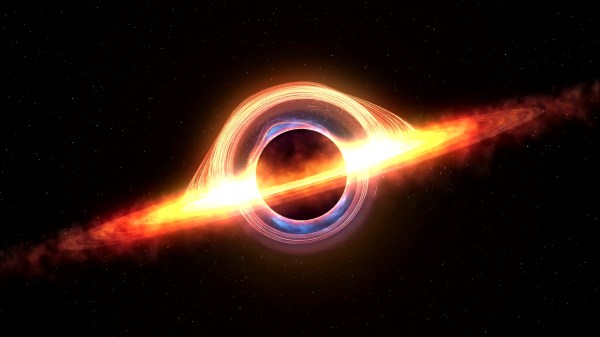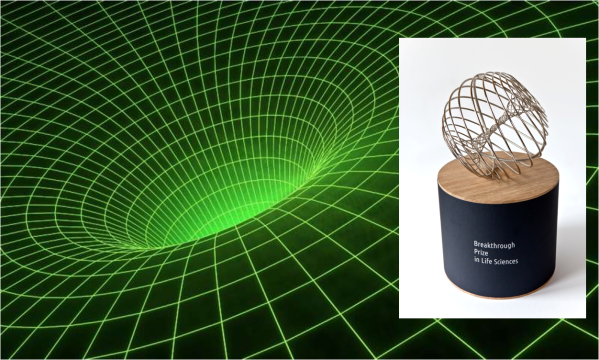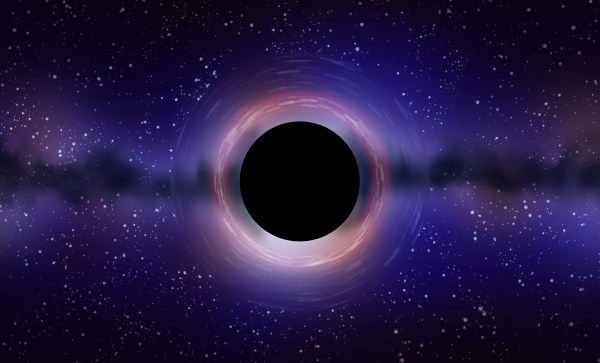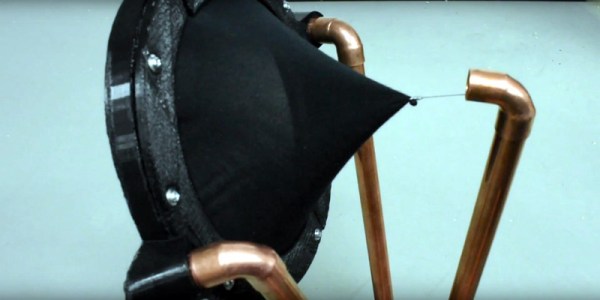We’ve devoted a fair amount of virtual ink here to casting shade at self-driving vehicles, especially lately with all the robo-taxi fiascos that seem to keep cropping up in cities serving as testbeds. It’s hard not to, especially when an entire fleet of taxis seems to spontaneously congregate at a single point, or all it takes to create gridlock is a couple of traffic cones. We know that these are essentially beta tests whose whole point is to find and fix points of failure before widespread deployment, and that any failure is likely to be very public and very costly. But there’s someone else in the self-driving vehicle business with way, WAY more to lose if something goes wrong but still seems to be nailing it every day. Of course, we’re talking about NASA and the Perseverance rover, which just completed a record drive across Jezero crater on autopilot. The 759-meter jaunt was completely planned by the onboard AutoNav system, which used the rover’s cameras and sensors to pick its way through a boulder-strewn field. Of course, the trip took six sols to complete, which probably would result in negative reviews for a robo-taxi on Earth, and then there’s the whole thing about NASA having a much bigger pot of money to draw from than any start-up could ever dream of. Still, it’d be nice to see some of the tech on Perseverance filtering down to Earth.
black hole8 Articles
Hackaday Links: May 15, 2022
It may be blurry and blotchy, but it’s ours. The first images of the supermassive black hole at the center of the Milky Way galaxy were revealed this week, and they caused quite a stir. You may recall the first images of the supermassive black hole at the center of the M87 galaxy from a couple of years ago: spectacular images that captured exactly what all the theories said a black hole should look like, or more precisely, what the accretion disk and event horizon should look like, since black holes themselves aren’t much to look at. That black hole, dubbed M87*, is over 55 million light-years away, but is so huge and so active that it was relatively easy to image. The black hole at the center of our own galaxy, Sagittarius A*, is comparatively tiny — its event horizon would fit inside the orbit of Mercury — a much closer at only 26,000 light-years or so. But, our black hole is much less active and obscured by dust, so imaging it was far more difficult. It’s a stunning technical achievement, and the images are certainly worth checking out.
Another one from the “Why didn’t I think of that?” files — contactless haptic feedback using the mouth is now a thing. This comes from the Future Interfaces Group at Carnegie-Mellon and is intended to provide an alternative to what ends up being about the only practical haptic device for VR and AR applications — vibrations from off-balance motors. Instead, this uses an array of ultrasonic transducers positioned on a VR visor and directed at the user’s mouth. By properly driving the array, pressure waves can be directed at the lips, teeth, and tongue of the wearer, providing feedback for in-world events. The mock game demonstrated in the video below is a little creepy — not sure how many people enjoyed the feeling of cobwebs brushing against the face or the splatter of spider guts in the mouth. Still, it’s a pretty cool idea, and we’d like to see how far it can go.
A Scientist Made An Artificial Black Hole In The Lab, And You Won’t Believe What Happened Next
OK, that was a little click-baity, but then again, so was the announcement this week that a scientist had confirmed Hawking radiation with a lab-grown black hole. It sure got our attention, at least.
As it turns out, the truth is both less and more than meets the eye. The article above was eventually edited to better reflect the truth that, alas, we have not yet found a way to create objects so massive that even light cannot escape them. Instead, physicist [Jeff Steinhauer] and colleagues at the Technion-Israel Institute of Technology have developed an acoustic model of black holes, which is what was used to observe the equivalent of Hawking radiation for the first time. Hawking radiation is the theoretical exception to the rule that nothing makes it out of a black hole and would imply that black holes evaporate over time. The predicted radiation would be orders of magnitude weaker than the background radiation, though, making it all but impossible to detect.
That’s where [Steinhauer]’s sonic black holes come in. In these experiments, phonons, packets of mechanical vibrations that stand in for photons, are trapped in a fast-moving stream of fluid. The point in the stream where its speed straddles the local speed of sound is the equivalent to a real black hole’s event horizon; phonons inside that boundary can never escape. Except, of course, for the sonic equivalent of Hawking radiation, which the researchers found after 97,000 attempts.
When we first stumbled upon this story, we assumed a lab-grown black hole, even an acoustic analog, would take a CERN’s-worth of equipment to create. It turns out to be far simpler than that; [Steinhauer], in fact, built his black hole machine singlehandedly from relatively simple equipment. The experiments do require temperatures near absolute zero and a couple of powerful lasers, so it’s not exactly easy stuff; still, we can’t help but wonder if sonic black holes are within the reach of the DIY community. Paging [Ben Krasnow] and [Sam Zeloof], among others.
[Featured image credit: Nitzan Zohar, Office of the Spokesperson, Technion]
Andrea Ghez Gazes Into Our Galaxy’s Black Hole
Decades ago, Einstein predicted the existence of something he didn’t believe in — black holes. Ever since then, people have been trying to get a glimpse of these collapsed stars that represent the limits of our understanding of physics.
For the last 25 years, Andrea Ghez has had her sights set on the black hole at the center of our galaxy known as Sagittarius A*, trying to conclusively prove it exists. In the early days, her proposal was dismissed entirely. Then she started getting lauded for it. Andrea earned a MacArthur Fellowship in 2008. In 2012, she was the first woman to receive the Crafoord Prize from the Royal Swedish Academy of Sciences.

Now Andrea has become the fourth woman ever to receive a Nobel Prize in Physics for her discovery. She shares the prize with Roger Penrose and Reinhard Genzel for discoveries relating to black holes. UCLA posted her gracious reaction to becoming a Nobel Laureate.
A Star is Born
Andrea Mia Ghez was born June 16th, 1965 in New York City, but grew up in the Hyde Park area of Chicago. Her love of astronomy was launched right along with Apollo program. Once she saw the moon landing, she told her parents that she wanted to be the first female astronaut. They bought her a telescope, and she’s had her eye on the stars ever since. Now Andrea visits the Keck telescopes — the world’s largest — six times a year.
Andrea was always interested in math and science growing up, and could usually be found asking big questions about the universe. She earned a BS from MIT in 1987 and a PhD from Caltech in 1992. While she was still in graduate school, she made a major discovery concerning star formation — that most stars are born with companion star. After graduating from Caltech, Andrea became a professor of physics and astronomy at UCLA so she could get access to the Keck telescope in Mauna Kea, Hawaii.
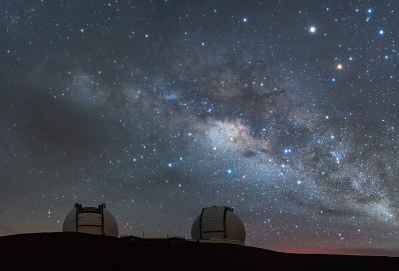
The Center of the Galaxy
Since 1995, Andrea has pointed the Keck telescopes toward the center of our galaxy, some 25,000 light years away. There’s a lot of gas and dust clouding the view, so she and her team had to get creative with something called adaptive optics. This method works by deforming the telescope’s mirror in real time in order to overcome fluctuations in the atmosphere.
Thanks to adaptive optics, Andrea and her team were able to capture images that were 10-30 times clearer than what was previously possible. By studying the orbits of stars that hang out near the center, she was able to determine that a supermassive black hole with four millions times the mass of the sun must lie there. Thanks to this telescope hack, Andrea and other scientists will be able to study the effects of black holes on gravity and galaxies right here at home. You can watch her explain her work briefly in the video after the break. Congratulations, Dr. Ghez, and here’s to another 25 years of fruitful research.
Black Hole Imaging Scientists Win 2020 Breakthrough Prize
Making a monumental scientific breakthrough is really kind of its own reward. Even so, it’s always nice to get extra recognition in the form of unexpected money. For the 347 scientists around the world who made history when they captured the first image of a black hole, the event itself is pretty sweet. The cake of notoriety recently gained some icing, because the group has been awarded a $3 million Breakthrough Prize.
The prize, known as “the Oscars of science”, was created eight years ago with the goal of furthering scientific advancements in the areas of physical science, mathematics, and life science. Created by tech investor Yuri Milner, the Breakthrough Prize is funded by other deep-pocketed notables like Sergey Brin and the Zuckerbergs. This year’s theme is “seeing the invisible”. Prizes will also be awarded for discoveries toward non-opioid pain relievers and the study of neuro-degenerative disorders.
Each of the black hole imaging scientists will receive $8,645.53 when the prize is awarded in a televised ceremony on November 3rd, which is going down at NASA’s Ames Research Center in Mountain View, CA. In lieu of parading all 347 scientists across the stage, [Shep Doeleman] of the Harvard-Smithsonian Center for Astrophysics and Director of the Event Horizon Telescope project, will accept the award on their behalf.
What exactly are black holes, and how did they come about? Explore their origins with [Will Sweatman] in this feature from 2018.
Black hole wire frame CC0 Public Domain via Phys.org
Black hole image via NASA
Creating Black Holes: Division By Zero In Practice
Dividing by zero — the fundamental no-can-do of arithmetic. It is somewhat surrounded by mystery, and is a constant source for internet humor, whether it involves exploding microcontrollers, the collapse of the universe, or crashing your own world by having Siri tell you that you have no friends.
It’s also one of the few things gcc will warn you about by default, which caused a rather vivid discussion with interesting insights when I recently wrote about compiler warnings. And if you’re running a modern operating system, it might even send you a signal that something’s gone wrong and let you handle it in your code. Dividing by zero is more than theoretical, and serves as a great introduction to signals, so let’s have a closer look at it.
Chances are, the first time you heard about division itself back in elementary school, it was taught that dividing by zero is strictly forbidden — and obviously you didn’t want your teacher call the cops on you, so you obeyed and refrained from it. But as with many other things in life, the older you get, the less restrictive they become, and dividing by zero eventually turned from forbidden into simply being impossible and yielding an undefined result.
And indeed, if a = b/0, it would mean in reverse that a×0 = b. If b itself was zero, the equation would be true for every single number there is, making it impossible to define a concrete value for a. And if b was any other value, no single value multiplied by zero could result in anything non-zero. Once we move into the realms of calculus, we will learn that infinity appears to be the answer, but that’s in the end just replacing one abstract, mind-boggling concept with another one. And it won’t answer one question: how does all this play out in a processor? Continue reading “Creating Black Holes: Division By Zero In Practice”
Build Your Own Black Hole
Okay, perhaps the title here is a bit of an exaggeration, but this black hole lamp made by [Will Donaldson] is an interesting approach to creating a black hole simulation without destroying the earth. This lamp uses a ring of LEDs surrounding a piece of black Lycra. A motor in the lamp base pulls the Lycra, representing the distorting effect that a singularity has on space-time. It also demonstrates how black holes can (in theory) evaporate by emitting radiation, a phenomenon called Hawking radiation. It’s a simple, but effective approach that physicists have used to demonstrate gravity for some time, using stretch fabric to simulate space-time and show how gravity warps it. It’s a two-dimensional version of a three (or more) dimensional phenomenon, but it works. And, hopefully, it won’t swallow the planet and destroy us all like the real thing might.


